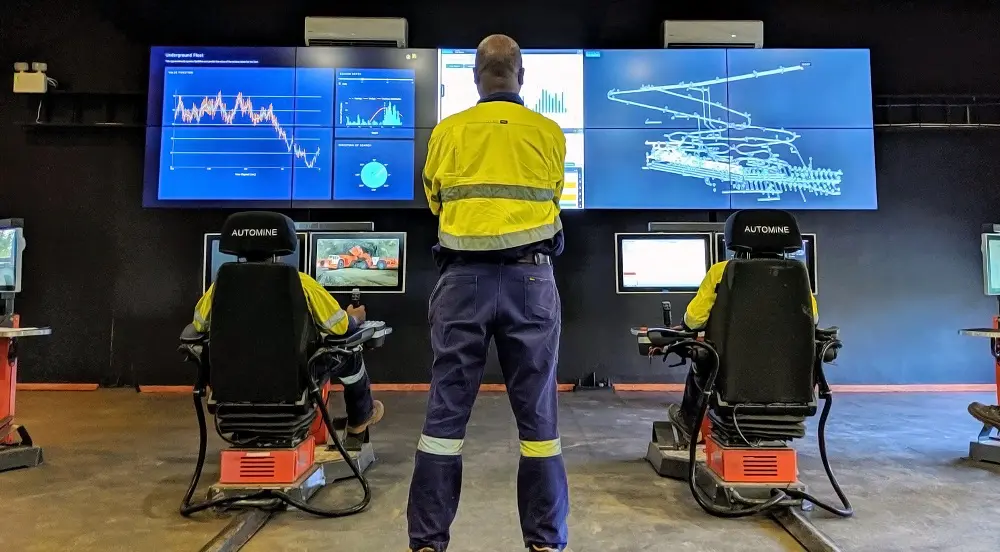The mining industry is on the brink of a technological transformation, and artificial intelligence (AI) is at the forefront of this change. By leveraging advanced algorithms and data analytics, AI is enhancing operational efficiency, improving safety, and driving sustainability in mining practices. This article explores the various applications of AI in mining, its benefits, challenges, and the future of this integration.
Applications of AI in Mining
- Exploration and Resource Assessment:
- AI algorithms can analyze geological data to identify potential mineral deposits. Machine learning models process vast datasets, including geological maps, drilling results, and remote sensing information, to predict where valuable resources are likely to be found.
- Predictive Maintenance:
- AI can monitor equipment performance in real-time, analyzing data from sensors to predict failures before they occur. This proactive approach minimizes downtime, reduces repair costs, and extends the lifespan of machinery.
- Automation of Operations:
- AI plays a crucial role in automating various mining processes, from drilling and blasting to ore sorting and transportation. Autonomous vehicles and machinery powered by AI algorithms can operate efficiently and safely, even in hazardous environments.
- Supply Chain Optimization:
- AI can optimize supply chain management by predicting demand, streamlining logistics, and improving inventory management. This ensures that resources are utilized effectively and reduces waste.
- Safety Monitoring:
- AI systems can analyze data from wearable devices and sensors to monitor worker safety. By identifying patterns and anomalies, AI can alert supervisors to potential hazards, enabling timely interventions.
- Environmental Management:
- AI helps mining companies comply with environmental regulations by monitoring air and water quality, predicting environmental impacts, and optimizing waste management practices. This contributes to more sustainable mining operations.
Benefits of AI in Mining
- Increased Efficiency:
- AI enhances operational efficiency by optimizing processes and reducing manual labor. This leads to lower operational costs and increased productivity.
- Improved Safety:
- By automating dangerous tasks and providing real-time safety monitoring, AI significantly reduces the risks associated with mining operations. This results in safer work environments for miners.
- Data-Driven Decision Making:
- AI provides actionable insights from vast amounts of data, enabling mining companies to make informed decisions. This leads to better resource allocation and risk management.
- Cost Reduction:
- The efficiency gains and predictive maintenance capabilities of AI contribute to significant cost savings, making mining operations more financially viable.
- Sustainability:
- AI supports sustainable mining practices by optimizing resource use, reducing waste, and minimizing environmental impacts. This is increasingly important in a world focused on responsible resource extraction.
Challenges of AI Implementation
- Data Quality and Accessibility:
- AI relies heavily on data, and poor-quality or inaccessible data can hinder its effectiveness. Mining companies must invest in data management and ensure that the data collected is accurate and comprehensive.
- Skills Gap:
- The integration of AI into mining operations requires a skilled workforce familiar with data science and AI technologies. Companies may face challenges in finding or training personnel with these skills.
- Initial Investment:
- Implementing AI solutions often requires significant upfront investment in technology and training. Companies must carefully evaluate the return on investment.
- Regulatory and Ethical Considerations:
- The use of AI in mining raises regulatory and ethical questions, particularly regarding data privacy and the potential for job displacement. Addressing these concerns is essential for successful integration.
- Cybersecurity Risks:
- As mining operations become more connected and reliant on AI, the risk of cyberattacks increases. Companies must implement robust cybersecurity measures to protect sensitive data and systems.
Future Prospects
The future of AI in mining is promising, with continued advancements in machine learning, data analytics, and automation technologies. As AI becomes more sophisticated, its applications will expand, leading to even greater efficiencies and innovations in the industry. The integration of AI with other technologies, such as the Internet of Things (IoT) and big data analytics, will further enhance decision-making and operational capabilities.
Conclusion
AI is poised to revolutionize the mining industry, offering significant benefits in terms of efficiency, safety, and sustainability. By embracing AI technologies, mining companies can navigate the complexities of modern resource extraction while minimizing risks and environmental impacts. As the industry evolves, the integration of AI will play a pivotal role in shaping the future of mining, ensuring that it remains viable and responsible in an increasingly resource-conscious world.



